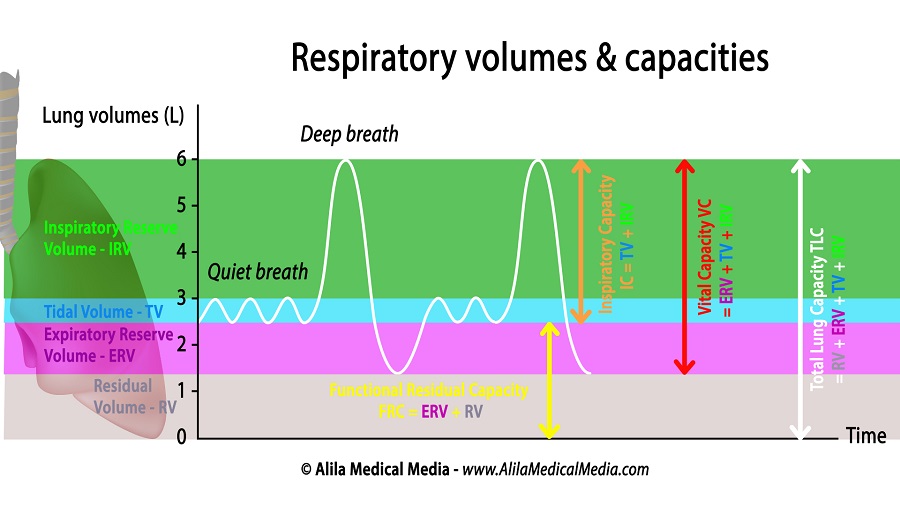Spirometry for Diagnosis of Respiratory Diseases Explained Clearly
Principles and applications of spirometry explained in 5 min - It's mind-boggling how simple it is!
This lesson includes an animated video lecture, downloadable images, quiz questions and a PDF
Spirometry is a common test for lung function. It is used to diagnose asthma, COPD, pulmonary fibrosis and other lung diseases. It can also be a helpful tool to monitor disease progression, and evaluate effectiveness of a treatment plan. A tube-like device, called a spirometer, is used to capture and record air volumes and breathing speed.
A spirometry test typically reports 4 respiratory volumes:
- Tidal volume, TV - the amount of air inhaled or exhaled during normal, quiet breathing, without effort.
- Inspiratory reserve volume, IRV - the amount of air that can be inhaled with maximum effort, after a quiet inhalation.
- Expiratory reserve volume, ERV - the amount of air that can be exhaled with maximum effort, after a quiet exhalation.
- Residual volume, RV – the amount of air remaining in the lungs after a maximum exhalation.
These volumes are used to calculate other parameters, called respiratory capacities:
- Inspiratory capacity, IC – the maximum amount of air that can be inhaled after a quiet exhalation.
- Functional residual capacity, FRC, - the amount of air remaining in the lungs after a quiet exhalation.
- Total lung capacity, TLC
Subscribe to our "Anatomy and Physiology" course below to continue!
This content is available within the following courses:

Anatomy and Physiology: More than 80 animations, plus downloadable PDFs, downloadable images, and quizzes.

Anatomy and Physiology: More than 80 animations, plus downloadable PDFs, downloadable images, and quizzes.